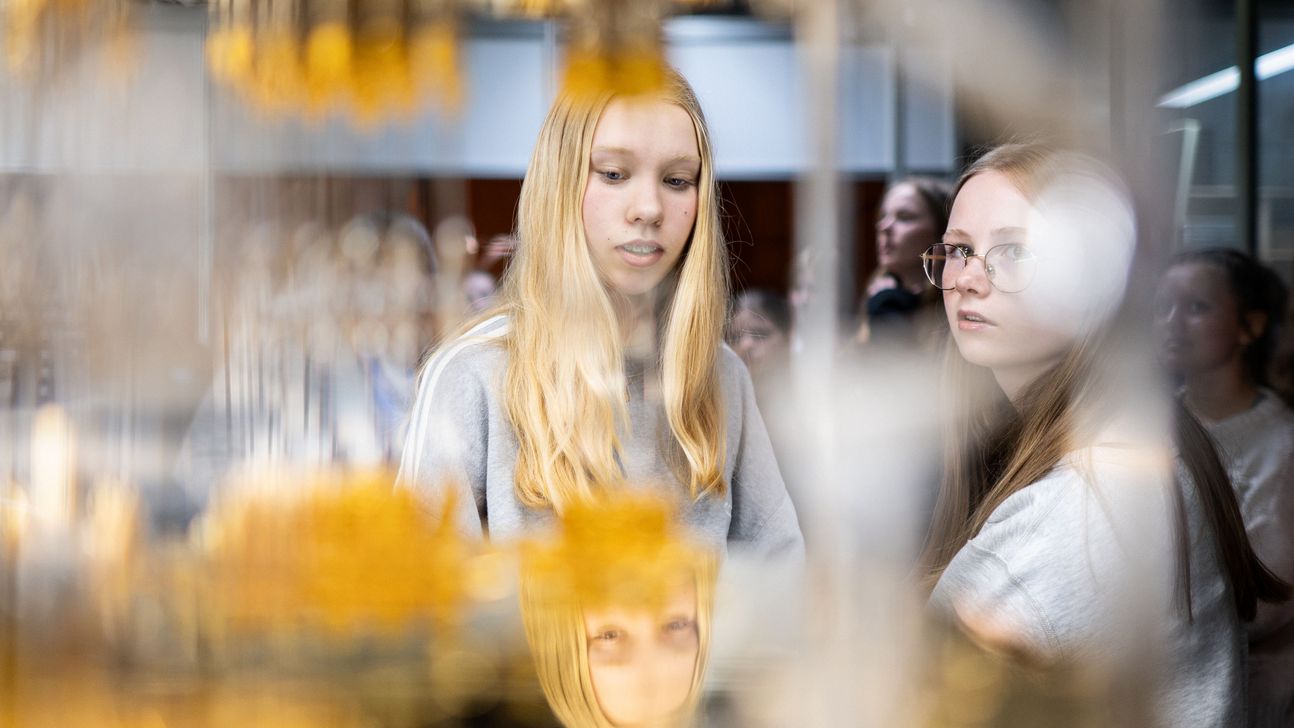A silicon wafer 20 cm in diameter and less than a millimeter thick lies ready on each place as the girls arrive for the Girls'Day at the Fraunhofer EMFT. The fine structures that can be seen on these so-called wafers – circuits and other electronic components – already give an idea: today is all about the smallest systems. The students then dive straight into the equally small and fascinating world of quanta with a lecture that clarifies the questions of what exactly quanta are and how researchers want to exploit their extraordinary properties for quantum computers.
15 students aged 14 and 15 took part in the Girls'Day program of Munich Quantum Valley (MQV), which was held this year in collaboration with and at the Fraunhofer Institute for Electronic Microsystems and Solid State Technologies (EMFT).
Lab tours and workshops

Ultrathin cables, the smallest sensors and, dependent on the coating, wafers reflecting in a wide variety of colors: how the Fraunhofer EMFT makes practical use of these tiny technologies was illustrated during a tour of the institute with its numerous laboratories and exhibits. The pupils were also able to take a look inside the clean room, at least initially only from the visitor corridor through the window. The girls were particularly fascinated by the effort that goes into keeping the air in the cleanroom almost completely free of particles and what this means for the scientists' day-to-day work.
A highlight that no laboratory tour should be without was the cryo lab, with its sparkling golden cryostat. The confirmation that it was real gold, "but only the coating, unfortunately it's not solid gold after all", earned appreciative looks from the students.
The girls continued with workshops in which they were allowed to lend a hand themselves, organized by female scientists from Fraunhofer EMFT, who were also able to give a personal insight into their work as researchers. In the smaller workshop groups, the initially shy students came to life and were delighted to be able to put their theoretical knowledge from physics lessons into practice. "URI!" came out of several mouths as if shot from a gun when asked about the relationship between current, voltage and resistance – experts know that this refers to Ohm's law. With the formula in mind, the girls then built small circuits, applied voltage and measured various resistances. The students also had a lot of fun with the thermal imaging camera, through which they were able to observe that heat is generated at the resistor. Daniela Zahn, a scientist at the Fraunhofer EMFT, explained that this is also used to look for defects on the wafers. There is usually something wrong where more heat is generated.
What does chocolate have to do with the speed of light?

An experiment, whose main protagonists were a microwave oven and a bar of chocolate, showed how heat also makes other, otherwise invisible, phenomena visible. The girls had previously learned in the cryo lab that microwaves are used to control the qubits on the chips in the cryostat. Of course, all the pupils knew from their own kitchens that microwaves can heat food. The fact that the wavelength, which is determined by the melting centers in the chocolate, and the frequency of the microwave can be used to determine the speed of light – that was new to everyone. The result, which was close to the actual value, was all the more impressive.
A group of four girls – no more could fit into the confined space – were allowed to take a look inside the cleanroom laboratory. Of course, this included putting on full-body protective clothing, from overshoes to headgear, before the girls were allowed to handle the tools in the cleanroom themselves. The schoolgirls were able to try out how much precision doctoral student Alexandra Schewski needs every day to work with the incredibly thin materials using vacuum wafer tweezers.
This year's MQV Girls'Day at the Fraunhofer EMFT ended with the realization that the profession of a scientist is extremely diverse and can also take place outside the laboratory. The wafers were given to the girls to take home as a reminder of the tiny technologies.
